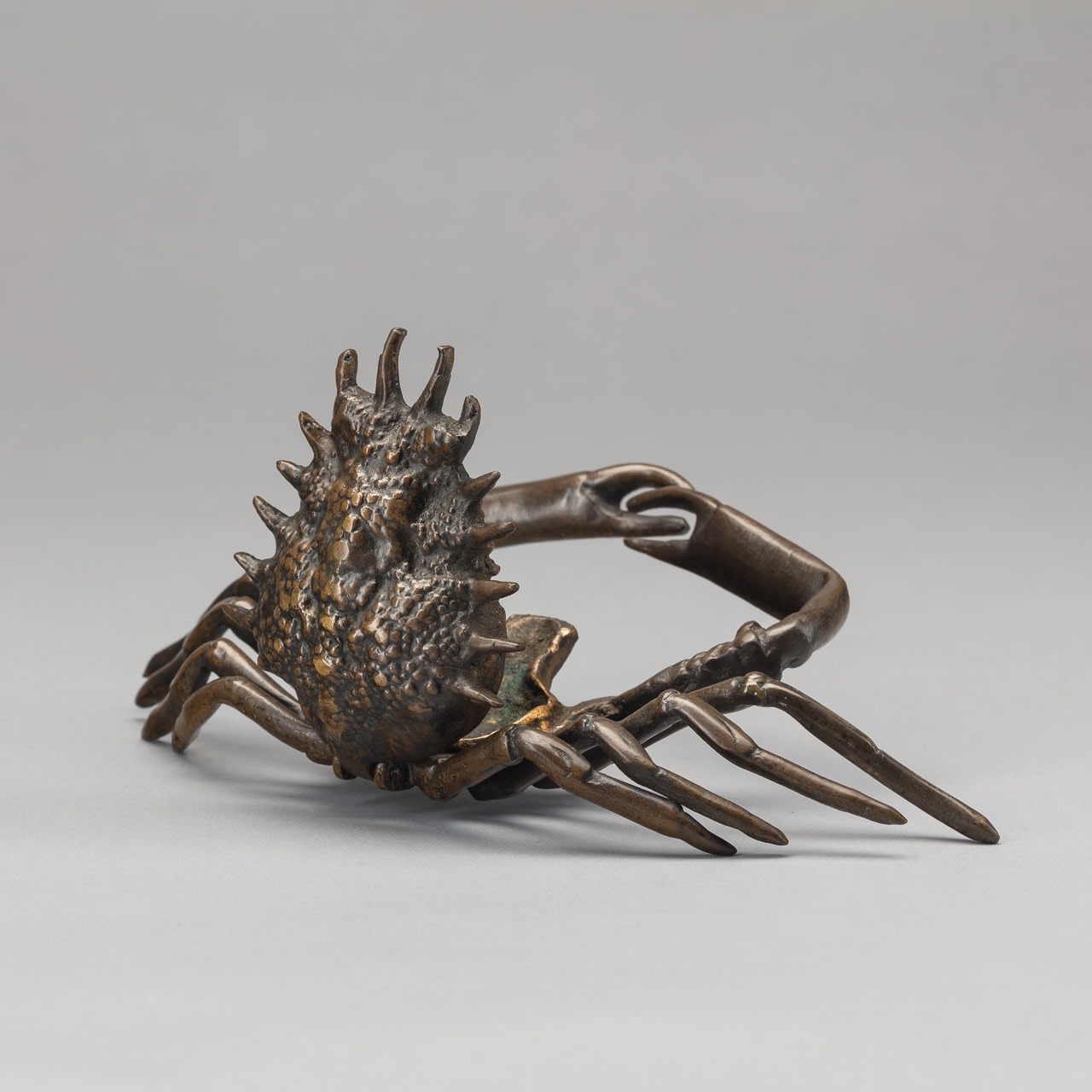Inkwell in the form of a Crab, Nuremberg, mid 16th century
4.5 x 20.5 x 11 cm
Further images
Due to the style, cast quality and brassy colour of this bronze, it seems highly likely that this inkwell was made in the German city of Nuremberg, during the mid-16th century. The city was extremely well connected to the rest of Europe by trade routes to Venice, bringing with it wealth and new ideas, like Humanism and Lutheranism – the religion to which the city council officially
converted to on 17th March 1525.
Bronze inkwells like this were very popular in the humanist university towns of the northern of Italy, such as Padua and Mantua. Indeed, there was perhaps no object more useful to a man of letters in these humanist centres of learning, than a bronze inkwell that both practically held ink for which to write and in its artistic form, expressed their interest in the natural world and a thirst for knowledge in the spheres of the arts and sciences. These were often displayed in their ‘studiolo’, as shown in the 1502 painting by Vittore Carpaccio (1465-1520) of The Vision of St. Augustine, who is depicted in a contemporary renaissance study, surrounded by small bronze statuettes, curiosities and other works of art. The very idea of creating sophisticated small utensils for both contemplation, edification and practical use was not only an intensely Italian concept, but it would have been regarded as highly innovative and even revolutionary, in mid-sixteenth century Nuremberg.
The maker of this object has been able to achieve an astonishing level of anatomical exactitude and naturalism because the work would have been ‘live cast’ around the body of a real crab, as was a popular technique developed in the renaissance period. An impetus for the use of such methods was in part classical because at this time it was known that the ancients used a similar technique, as discussed by Pliny the Elder (Naturalis Historia, 34.46; 35.153). The crab also has astrological associations with the zodiac sign of ‘Cancer’, which may have been significant to the original owner.
Related literature:
J. Chipps Smith, Nuremberg - A Renaissance City, 1500-1618, Austin, 1983
J. Warren, Medieval and Renaissance Sculpture in the Ashmolean Museum, Sculptures in Metal, vol 1., Oxford, 2014Join our mailing list
* denotes required fields
We will process the personal data you have supplied to communicate with you in accordance with our Privacy Policy. You can unsubscribe or change your preferences at any time by clicking the link in our emails.






